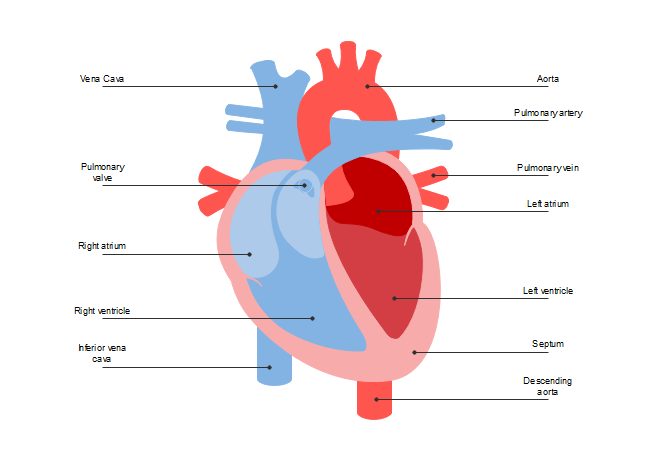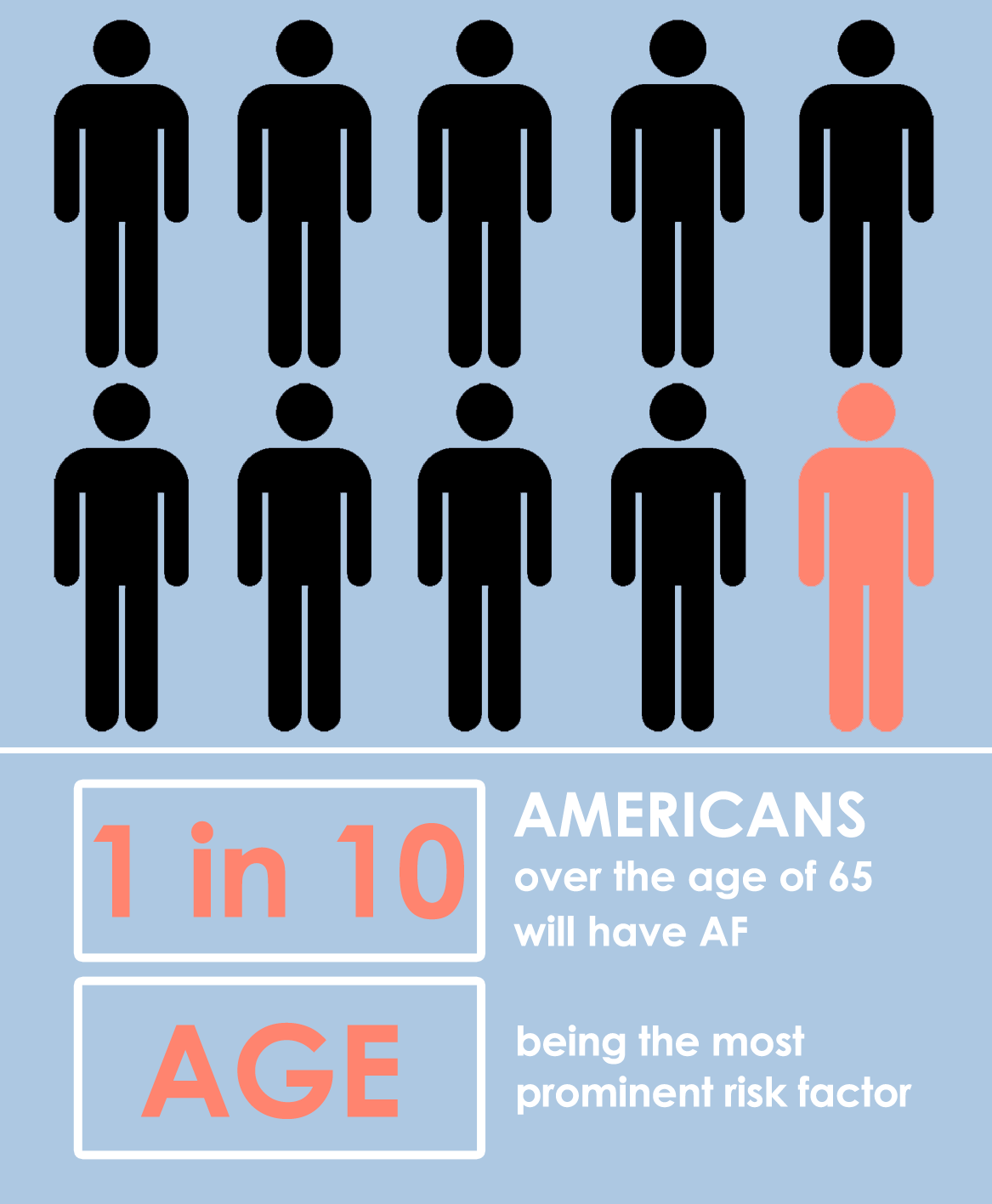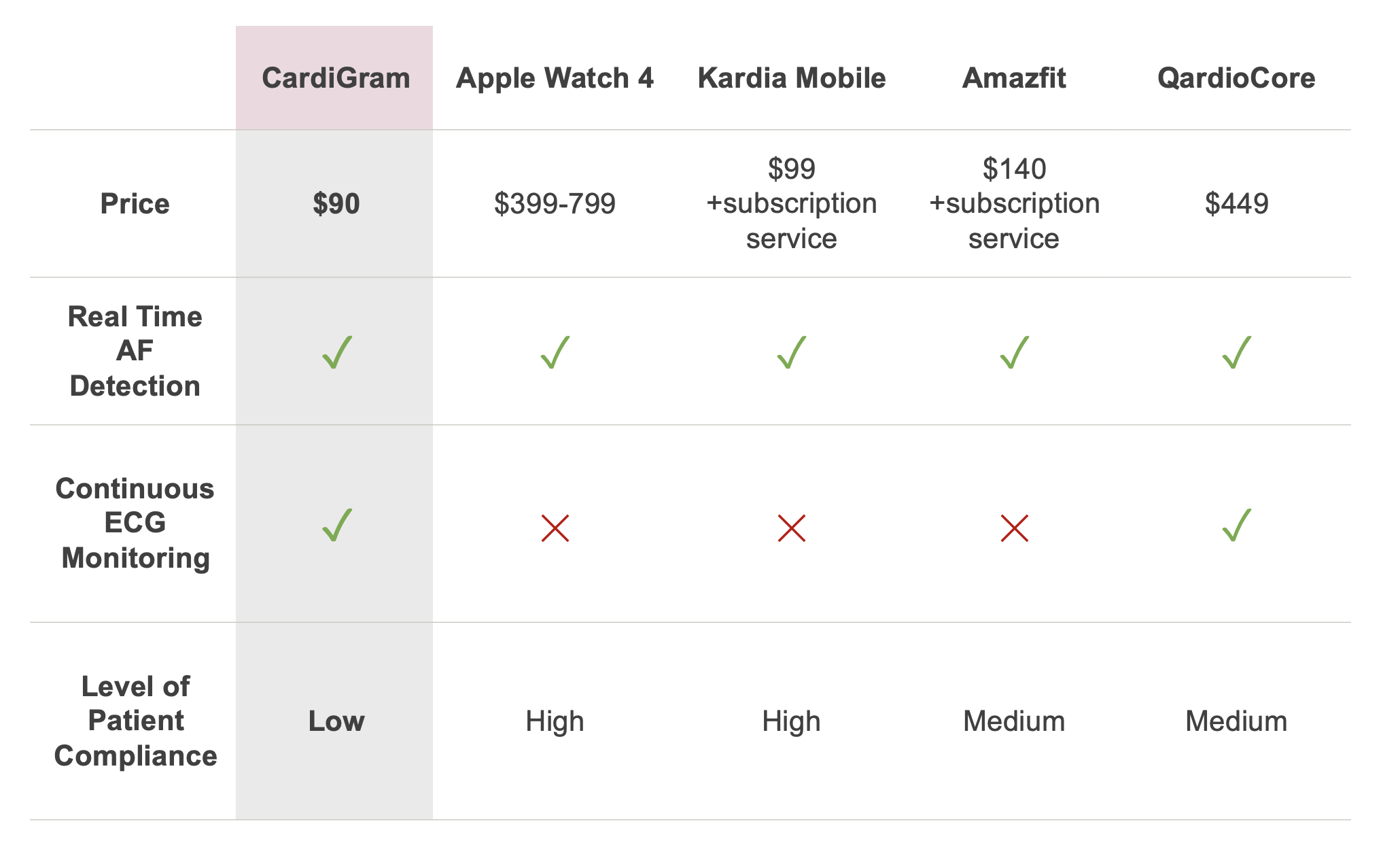Atrial Fibrillation
The Condition at Heart
THE HEART

The heart is a muscular organ responsible for pumping blood throughout the body, supplying oxygen and nutrients to tissue necessary for tissue survival. The heart is divided into two halves, the left and right, which are further divided into two chambers, the atrium and the ventricle. Flaps known as heart valves sit at the openings connecting the chambers and the halves together. How electrical signals propagate or travel within the heart determines when these heart valves open or close, which essentially control how the heart pumps blood to the lungs and the rest of the body.
WHAT IS ATRIAL FIBRILLATION?

Atrial fibrillation (AF) is the most common type of heart arrhythmia, or irregularity in the beating of the heart. AF is caused by changes to the heart’s physical properties, which can then cause an increase in the heart’s electrical signaling. The atria becomes overloaded by this increase, resulting in a rapid, irregular heartbeat. However, the ventricles are unable to adapt and become out of sync with the atria, or the upper portion of the heart, leading to blood stagnation and an increased possibility of a stroke or heart failure. Some risk factors, such as a sedentary lifestyle, smoking, obesity, diabetes, and sleep apnea, can be modified to decrease a patient’s chances of developing the condition.
WHO DOES IT AFFECT?

There is an estimated 2.7- 6.1 million cases of AF occurring in the United States alone. The likelihood of developing AF increases with age, with 1 in 10 Americans over 65 having this condition. Because age is the most prominent risk factor, most patients cannot predict or prevent the development of AF. As our population steadily grows older, the number of AF diagnoses is expected to continue to rise in America and other countries all around the world.
MARKET NEED?

The best way to prevent or slow AF progression is through early detection and diagnosis. However, AF is largely underdiagnosed because it is often asymptomatic, especially in patients over 65. As a result, there is a need for a wearable instrument that will allow patients to realize their risk for the condition before it is too late. With our device, the CardiGram, users will be alerted if they are experiencing AF symptoms and then prompted to contact their physician; this could potentially save them from future and more dangerous AF complications. By making a non-invasive, inexpensive, real-time, and mobile monitoring option available for those who are at a high-risk for AF, more lives could be saved from AF and its resulting conditions.
WHAT'S CURRENTLY OUT THERE?
Current products on the market for AF detection include the Apple Watch 4, Kardia Mobile, Amazfit, and QardioCore. While these competitor devices are capable of acquiring AF signals in real time, in comparison to the CardiGram, each pose difficulties in terms of continuous ECG monitoring, high pricing, and a dependence on patient compliance.

